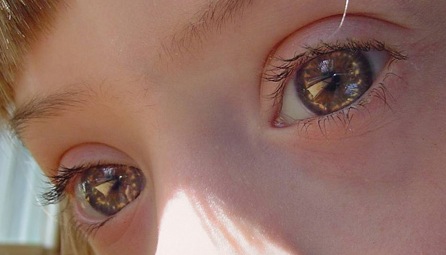Brushfield spots
 From Wikidoc - Reading time: 2 min
From Wikidoc - Reading time: 2 min

Brushfield spots are small white or grayish/brown spots on the periphery of the iris in the human eye due to aggregation of a normal iris element (connective tissue). These spots are normal in children but are also a feature of Down syndrome. They occur in 35-78% of newborn infants with Down syndrome.[1] They are much more likely to occur in Down syndrome children of the Caucasian race than children of Asian heritage.[2] Brushfield spots are named after the physician, Thomas Brushfield, who first described them in 1924.
They are focal areas of stromal hyperplasia, surrounded by relative hypoplasia and are more common in patients with lightly pigmented irises.
References[edit | edit source]
- ↑ Sanez, R.B. (January 1999), "Primary care of infants and young children with down syndrome.", American Family Physician, 59 (2)
- ↑ Kim, J.H.; et al. (November 2002), "Characteristic ocular findings in Asian children with Down syndrome.", Nature, 16 (6)
Template:Eye-stub Template:Med-sign-stub sv:Brushfields prickar
Licensed under CC BY-SA 3.0 | Source: https://www.wikidoc.org/index.php/Brushfield_spots8 views | Status: cached on July 29 2024 16:42:01↧ Download this article as ZWI file
 KSF
KSF